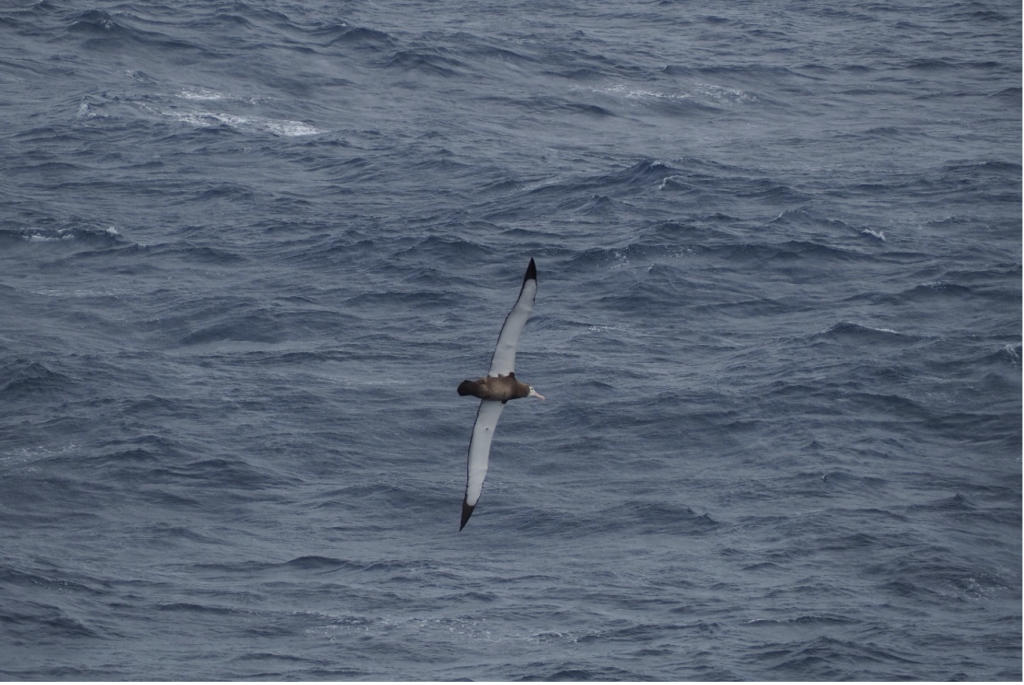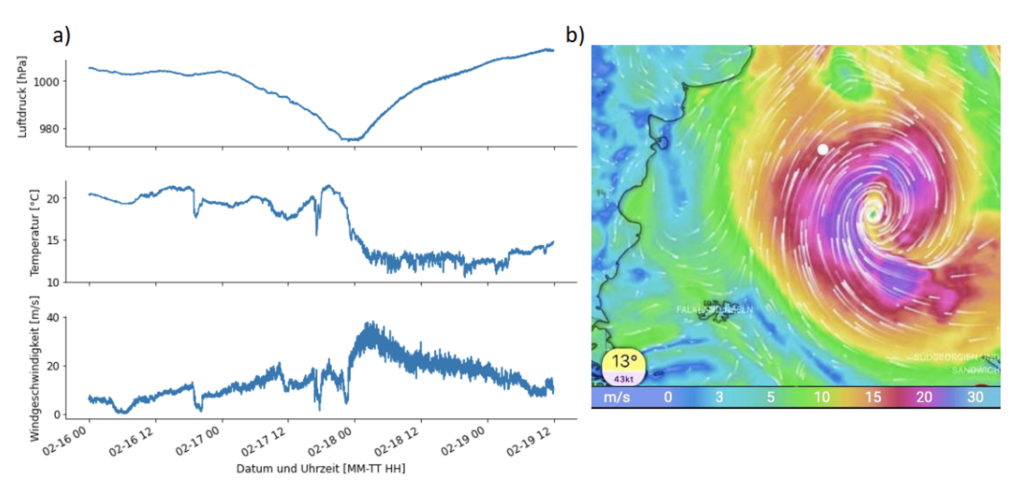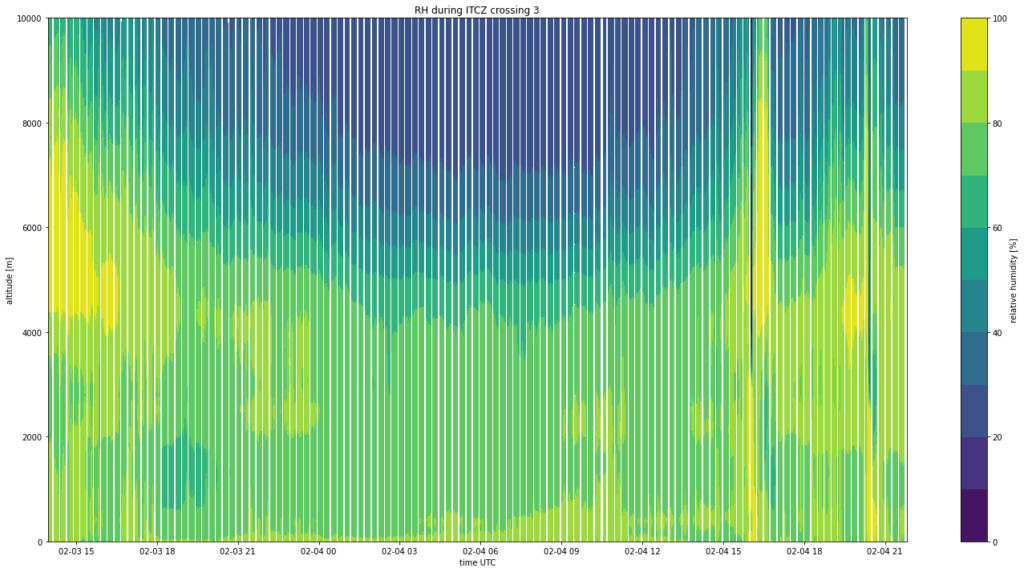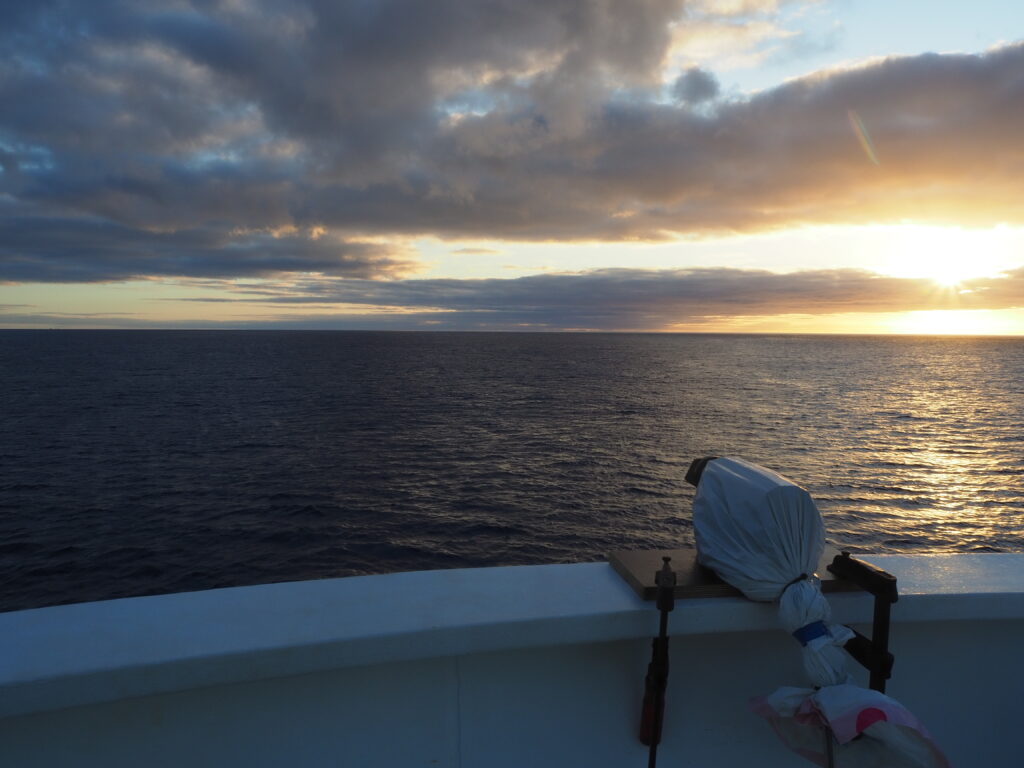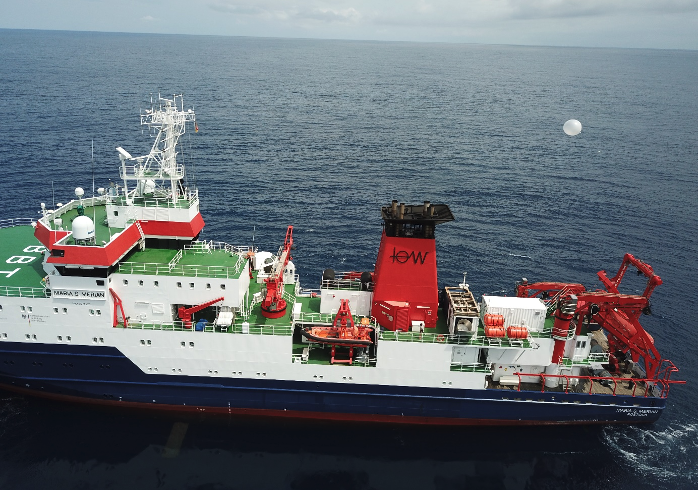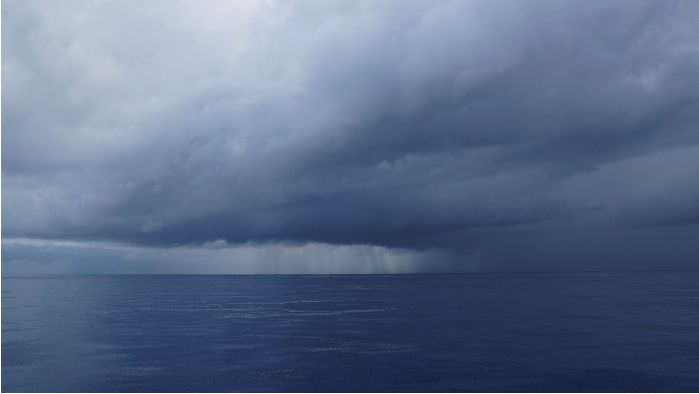by Daria Paul and Lennéa Hayo
The last few days were quite rough. After crossing the 40° S, we encountered a heavy storm shaking us thoroughly. It gave us wind speeds of up to 140km/h, 12m high waves and rolling the ship from side to side by nearly 45°. Everything on the ship had to be fastened to not go flying about and walking became a real challenge – not even to mention in a straight line.
Luckily the storm weakened after two days bringing the relieve of a good night of sleep again. With the ships movement during the storm even that became impossible, rolling us around in our beds, feeling weightless in one moment and three times heavier than normally in the next.
While we are now passing the Falkland Islands and approaching the Magellan Straight, plenty of wildlife is popping up: albatrosses and other flocks of birds have been accompanying the ship since yesterday and some lucky people even saw whales!
Apart from watching wildlife, we are kept busy with writing cruise reports, backing-up data and preparing the instruments for packing. Tomorrow we will reach Punta Arenas and are sad that the campaign is already over. It was great fun working together with the amazing crew of Maria S. Merian, with so many enthusiastic scientists from very different fields, taking measurements in the middle of the Atlantic Ocean and especially very closely experiencing the features that we observed.
